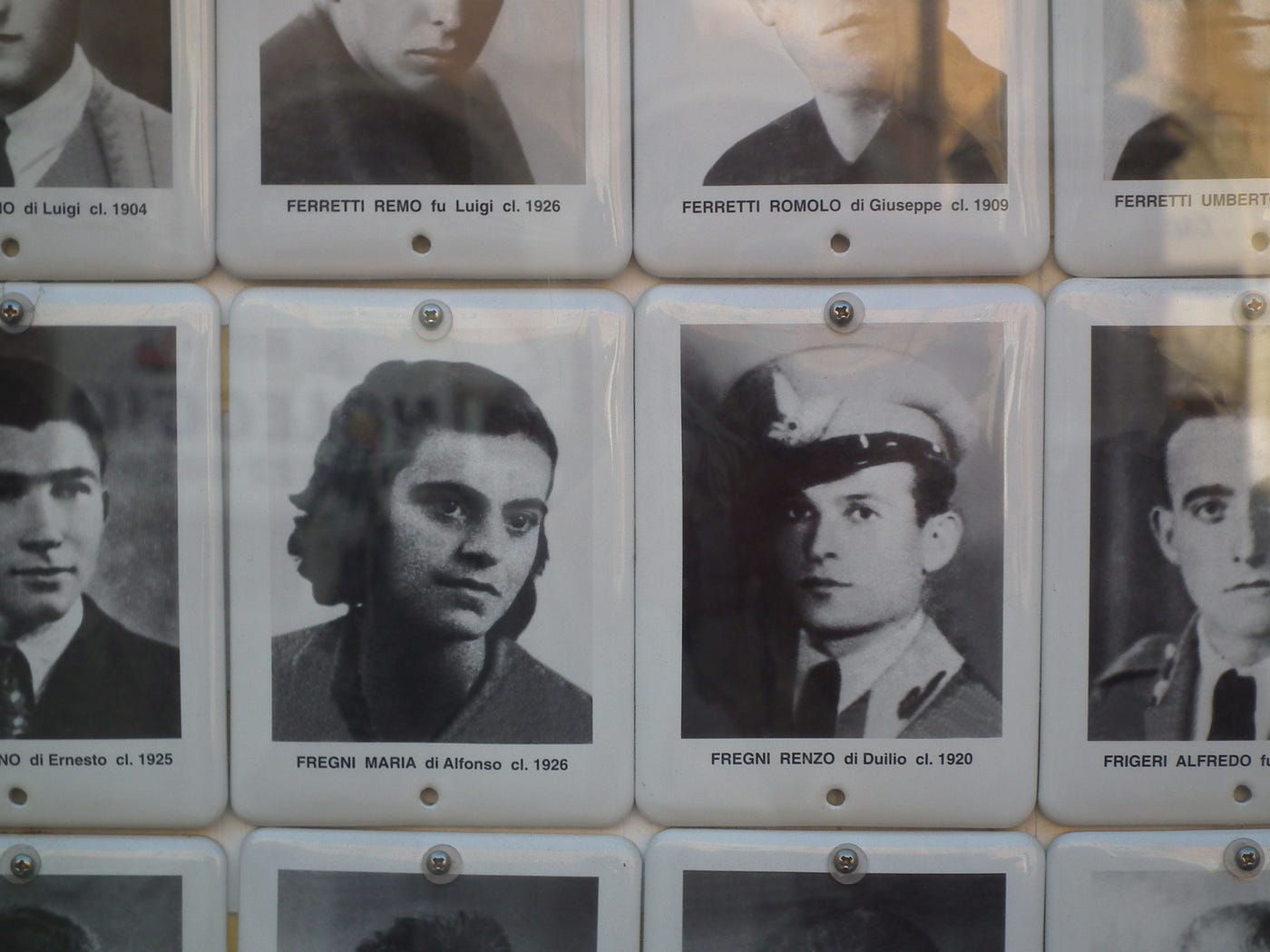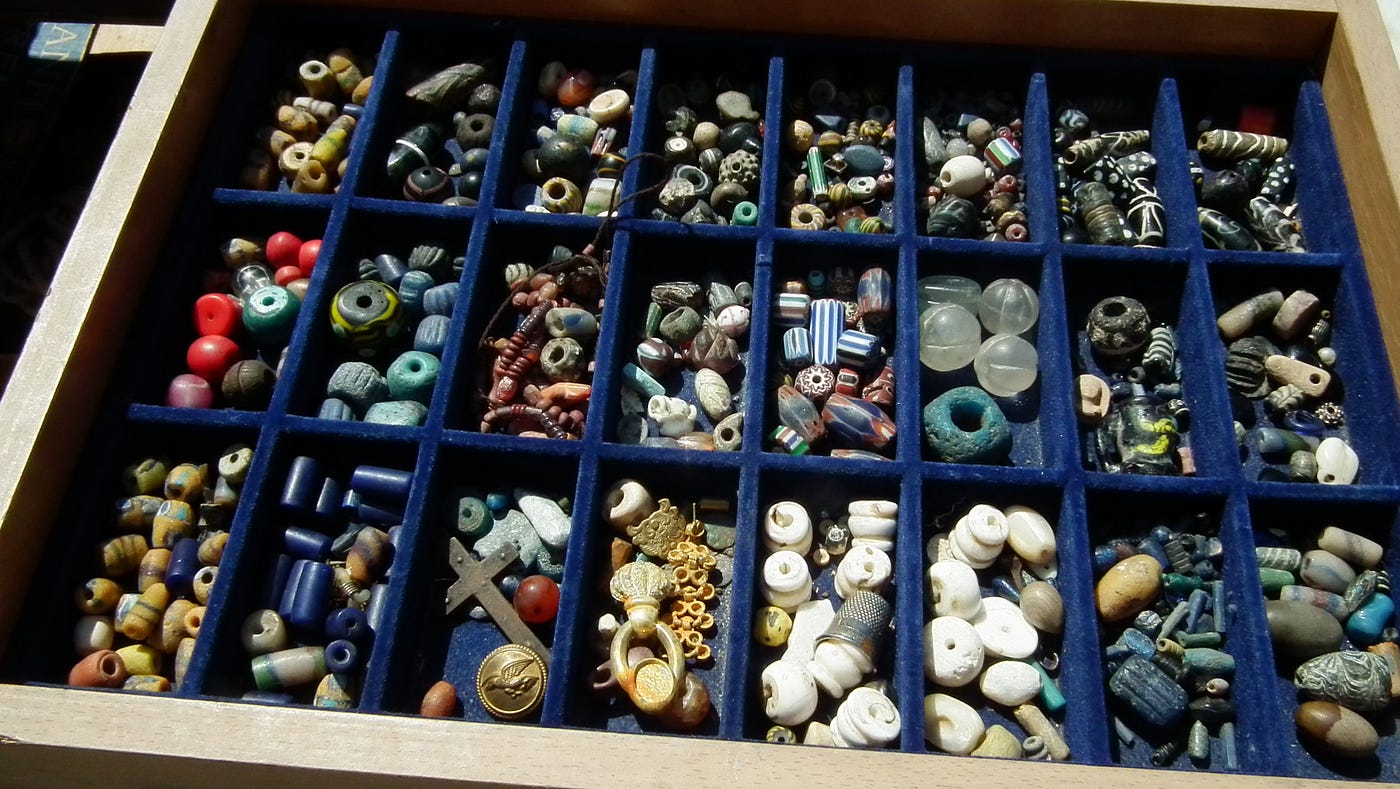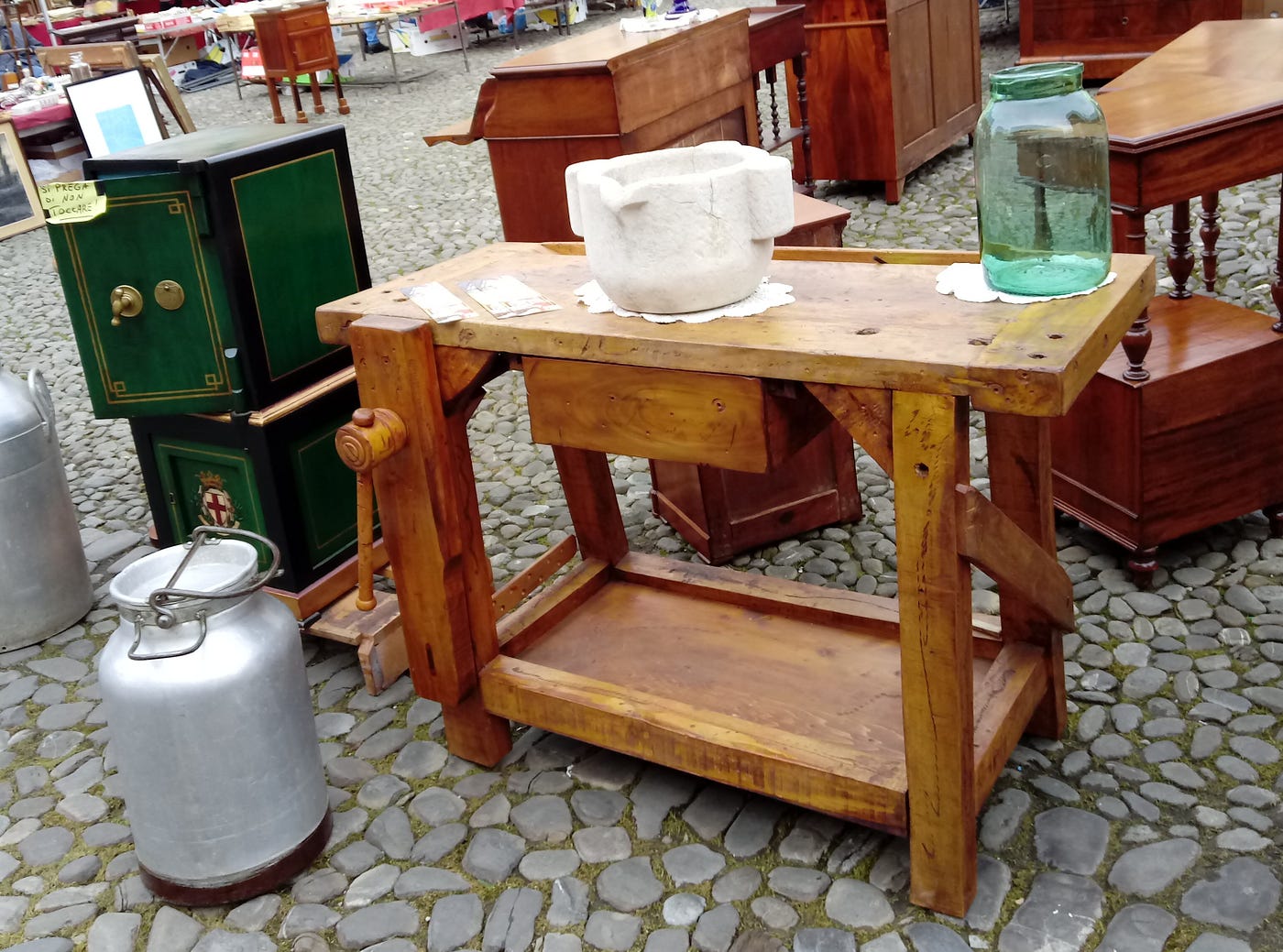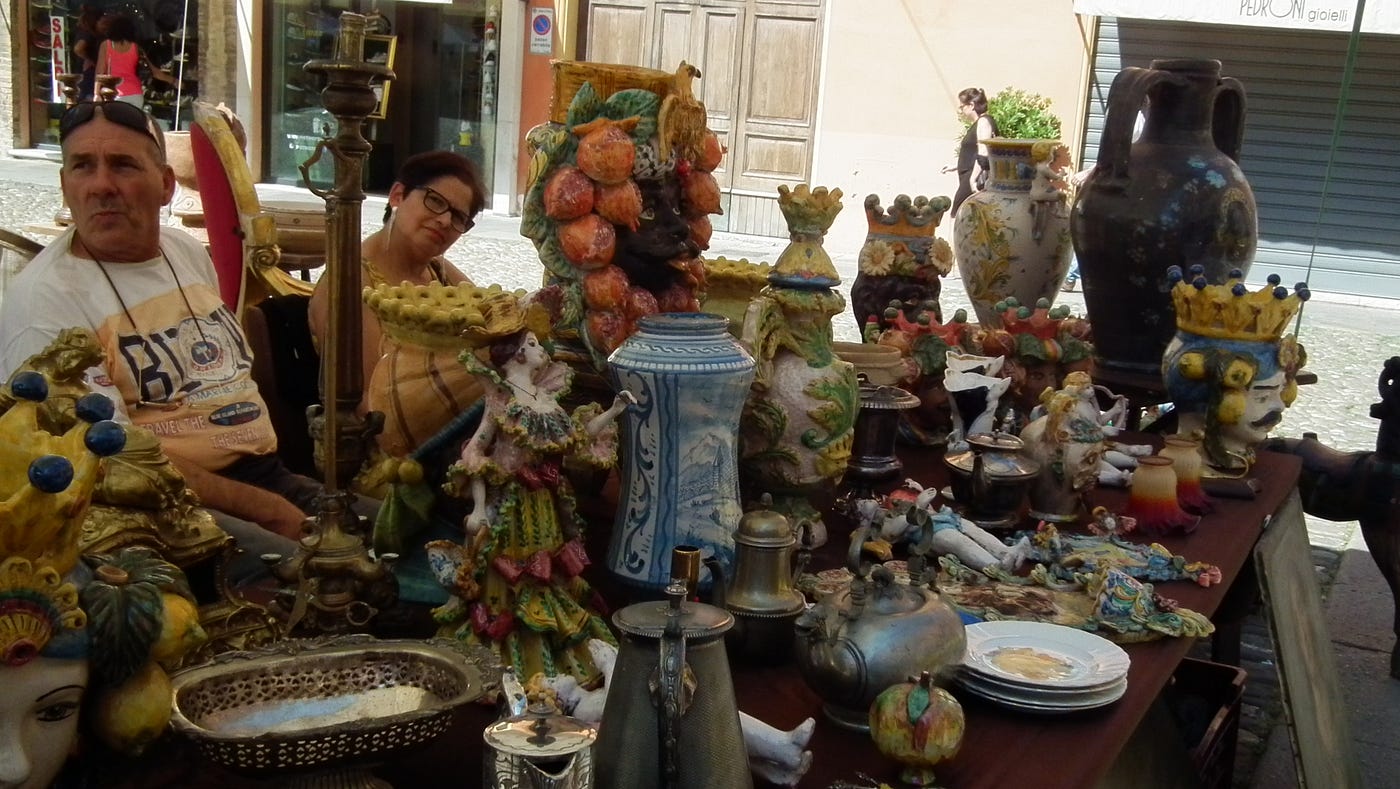Come and touch the past
Listen
The last weekend of the month is a special time in Modena. It’s when the antique market sets up in the Piazza Grande. Booths fill up the piazza and spill over onto the side streets, and reach into the Piazza del Torre and the little piazza next to the market.
I always have a sense of excitement when I walk into the historic centre of town from the apartment on via Giardini. As I near the piazza where the cathedral stands, I am joined by other people who are happily talking. Kids run around and between adults as we pass sidewalk cafes. No cars are allowed here, so the kids can run freely.
Sometimes I come to the market with a goal, looking for old tools, or textile equipment, and I am always on the lookout for fountain pens. There is no telling what might show up.

It’s not just about buying things. The antique market is a reflection of the values and culture of the recent past. There are familiar tools, but instead of factory-made, they are obviously handmade. I have a couple of kitchen knives that I love. I can tell that someone made them because the rivets holding the handle on were made from…
Despite their age, they keep a wonderful edge. Someone knew the metal they were working with.
The knives I bought always remind me that there was someone who made them and someone who used them before I found them. How many generations used them before they ended up at a stall in the antiques market?

Like all European fairs, there are booksellers, and I am always tempted. There are expensive hardcover art books, cheap paperbacks of classic literature printed in the 1920s, and books about local and regional history. There’s a 1930s travel guide to Emilia. It was published long before the autostrades were built and shows routes that wind through villages and what sights there are to be seen along the way.
Some of the book sellers sell postcards. I can barely read the faded handwriting, and I am fascinated by the stamps. Holidays by the sea, trips to France and beyond. There are so many stories there.

As some eras fade into the past, the memorabilia dwindle.
In the 90’s I remember buying a child’s notebook from the Fascist era for a friend of mine who is into modern Italian history. On the cover, a cartoon drawing of Mussolini greets a young boy and girl on their way to school. There is less of that sort of ephemera now. Vendors still have buttons and medals along with helmets, but even those are becoming rarer.

A couple of different vendors sell Murano glass chandeliers that glitter in the sunlight. They also have trays full of crystals and glass bits. They are handy parts for repairing an old chandelier or possibly even making a new one from scratch.

I remember one time when I went with my uncle from village to village, visiting various antique markets. He was looking for old copper pots and pans to decorate his kitchen. A friend of mine in the States asked me to look for Art Nouveau drawer pulls. I’d mistakenly told my uncle I was looking for antique ones. He shook his head, saying it would be difficult. When I finally found some, he said that he thought I wanted antique hardware. This was Still Liberty! Modern stuff! He thought I wanted something from the 16th century. He told me not to bother buying any of that. He had a box full of that stuff up in the attic.
There are always sellers of vintage clothing and costume jewellery. In the past, there were also racks of fur coats. The distaste for wearing furs has caused them to all but disappear. But there are still fashions from the 60s and 70s, flashy clothes in brilliant colours, plus the odd exotic import, perhaps something someone bought on impulse while on holiday.

I have a regular route when I visit the market. I come into the piazza from the west and go up and down the aisles in the Piazza Grande and then stop at the Ghirlandina on the way to the Piazza del Torre. There is a war memorial on the north side of the Ghirlandina. I stopped to see the picture of my uncle Renzo. His photo is one of so many. He died in the resistance, such a young man.

In the Piazza del Torre, a man sells gramophones and wax cylinder players. Another booth has intricately carved jewellery boxes. This is also where buskers set up playing traditional instruments, including a piva, the small bagpipe that is native to this part of Italy.
After the Piazza del Torre, I walk back through the Piazza Grande to the Piazza XX Settembre where there are a few more vendors. I pass the man who has antique watches and a woman who restores paintings along the way. The narrow piazza is kind of an overflow area for when more dealers show up. Outside of the piazza, there is always a man selling vinyl LPs. He has hundreds of them, and I wonder how he keeps them from warping in the heat.

There are also people with stacks of fumetti, the squarebound comic books that feature Donald Duck, cowboys, noir mysteries, science fiction, and horror. This is also where I sometimes come across people who show up only once. There was a man selling rare and antique beads one time. I spotted a very old trade bead one day, and should have bought it then. The next time I went to the market, he wasn’t there and never returned. I regret not buying it to this day.

There are a few other things that got away that I still think about. One man sells miscellaneous household tools, but also textile tools. I have a vicious-looking flax comb and hackle that I bought from him, and I got a great deal on a swift, a device for winding yarn that expands like an umbrella. But he also had a worn pink silk bag with dozens of fine double-pointed knitting needles. These days, people only use them for knitting socks or occasionally hats, but for larger things like sweaters, everyone uses needles attached to long, flexible cords.
Before those were invented, knitters had to use multiple double-pointed needles. It would be difficult for me to knit like that now. I am spoiled by having modern needles. It would be like the way the White Queen knitted in Through the Looking Glass, always adding more needles to the project. I didn’t really need them, but I still think about them.

When it’s time to think about lunch, I either go to Al Tramezzino, a tiny place that has pizza and sandwiches with a kind of Route 66 décor. Old licence plates are displayed on the wall with other 50s memorabilia, both American and Italian. There are no tables, only a row of stools along a counter facing the windows. There’s always a copy of the Gazette di Modena on the counter.
If it’s too crowded, I walk a little farther to the Mercato Albinelli, the covered market. I continue past all the fruit and vegetable stalls to the back where a family sells pizza and focaccia with various toppings. They charge by the kilo, so the price is reasonable. I get a bottle of acqua frizzante from another stall and find a table to sit at for lunch. If I wanted a fancier lunch, there are vendors who sell ready-made food and can heat it up in a microwave. In recent years, the market has gentrified, pushing out the fishmongers and installing wine bars and upscale restaurants. One fishmonger has managed to stay on.
While I eat, I think about some of the things I saw. Do I really want another fountain pen or another pair of earrings? There were books and other odd things that I needed time to think about before deciding if I really wanted to buy them. But while I am at the market, I should pick up some fresh vegetables for dinner.

After lunch, I wander around a bit more. There’s a woman who has canning jars from America (Ball and Kerr!). She also has cardboard boxes of old Sheffield plate. I can see where the silver has rubbed off, revealing the copper below. It makes me nostalgic for the time I lived in Sheffield, but I don’t need to buy any.

There are extraordinarily beautiful workbenches. Solid wood, all joined and fitted without a trace of a nail or screw. Even the built-in bench vise is made of wood, including the threaded screw.
A couple of generations ago, every household would have had cast iron meat grinders (My grandmother used them for crushing tomatoes), milk jugs, and all the little hand-held tools for cutting pasta. Now they are curiosities.
There are bits of my own past here, too. Things I used, but are no longer a part of my life. Modern life has swept old telephones and film cameras away. Maybe someone will buy them as retro décor, or maybe an aspiring filmmaker would want them for a period setting. I look at them and think about how, when they were new, people would dream of getting some of these things. They were ultra modern, something to aspire to. Something to show off to the neighbours.

In the late afternoon, the vendors start packing things away. I’ve had a full day of culture and exercise. This is the main reason I return again and again to the antiques market. I see Modena’s personal history in all the objects on display here. I’ve learned a bit more about the past, not the history that’s taught in books, but the history of lives lived every day.
The joy of a postcard received from a friend from far away, the day-to-day life of cooking and washing up, dancing to the latest LP on the record player, the tools used for work, and the toys the kids got for Christmas long ago. Some of that excitement still clings to these old things. There’s a kind of gentle electricity that runs through them with a mild shock of recognition when I come across a bit of my own past. It’s like catching up with an old friend.